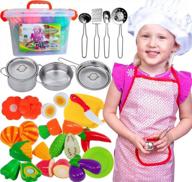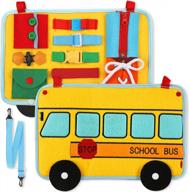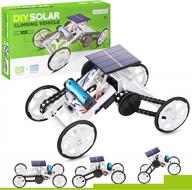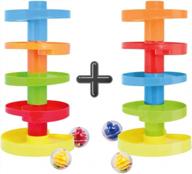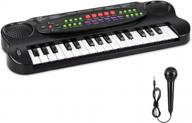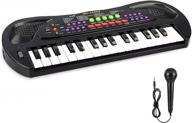How to choose the right set of egg shakers for your child?
Egg shakers are a great first musical instrument for kids. They are inexpensive, easy to play, and help develop motor skills and rhythm. When choosing egg shakers, here are some tips:
Consider your child's age
- For toddlers: Choose a set with soft, plastic eggs that are easy to grip and won't break if dropped.
- For preschoolers: Opt for a set with larger, wooden eggs that make a fuller shaking sound.
- For elementary school kids: Go for a full set of 6 eggs in different sizes that can play different pitches.
Look for bright colors
Kids are drawn to bright and vibrant colors. Look for eggs in primary colors, pastels, neon, or with fun patterns.
Choose the right size
Pick eggs that fit comfortably in your child's hands. If the eggs are too small, they'll be hard to grasp and shake. If they're too big, little hands won't be able to shake them properly.
Consider sounds
Plastic eggs make quieter, subtler sounds while wooden eggs create fuller shaking sounds. Both work well but test out the sounds to see which you and your child prefer.
With the right set of egg shakers, your child will be making music and honing motor skills in no time. Start simple with just one or two eggs and let your child discover the joys of making music!
How to introduce musical instruments to young children?
Playing musical instruments provides many developmental benefits for young children. Here are some tips for introducing instruments in a fun and engaging way:
Start with shakers and drums
Simple percussion instruments like shakers, maracas, drums, and tambourines are great first instruments. They are easy to play by shaking or hitting, allow for free experimentation, and provide immediate auditory feedback.
Let them explore
- Allow children to handle instruments and discover sound capabilities on their own first.
- Don't give too much direction early on.
- Let them tap, shake, hit, and listen to the instrument with minimal guidance.
Add music elements slowly
Once they have explored the instruments, you can start adding in simple music concepts like:
- Playing fast vs slow.
- Playing loud vs quiet.
- Playing different rhythms.
Encourage instrument play during everyday activities
- Have instruments available during meal times, bath time, while reading stories, etc.
- This integrates music into daily routines.
Be patient
Don't expect perfectly executed rhythms and songs right away. Allow children to learn at their own pace through exploration and play.
With a little encouragement, musical instruments can become a beloved part of your child's world. Enjoy the process of introducing them together!
How to use egg shakers to develop motor skills in toddlers?
Egg shakers are a great tool for improving motor skills in toddlers. The motions needed to play them help strengthen muscles and develop hand-eye coordination. Here are some tips:
Encourage different grips
Start by showing your toddler different ways to hold the egg shaker:
- Pincer grasp - Using thumb and index finger
- Palmar grasp - All fingers and palm
- Fist grip - Entire hand clenched around
Switching up grips exercises different hand muscles.
Play along to songs
Shake the egg shaker to songs with different tempos - fast and slow. Moving to the beat builds timing skills.
Focus on wrist movements
Teach your toddler to shake the egg by moving their wrist rather than whole arm. This strengthens wrist flexibility and control.
Shake in different directions
- Up and down
- Side to side
- Circular motions
Varying shake direction works muscle groups in new ways.
Shake with both hands
Starting with one egg shaker in each hand boosts bilateral coordination.
Make it a game
Incorporate the egg shakers into fun action songs and games. This keeps toddlers engaged while developing motor skills.
With consistent practice shaking egg shakers, toddlers will build hand strength, coordination, and timing. Make it a blast by being silly and keeping things moving!
How to incorporate egg shakers into music lessons and activities?
Egg shakers are a versatile musical instrument that can be used to teach a variety of music concepts. Here are some ways to incorporate them into lessons and activities:
Rhythm
- Have students shake egg shakers to the beat of songs as you play them.
- Practice rhythm patterns - short and long shakes, fast and slow tempos.
- Echo rhythm patterns - teacher plays a pattern, students echo it back.
Melody
- Assign each student an egg shaker tuned to a different pitch.
- Have them shake the shakers to play simple melodies.
Musical Forms
- Use shakers to delineate different sections - verse, chorus, bridge.
- Shake loud on choruses, soft on verses.
Call and Response
- Teacher plays a rhythm, students echo it back on shakers.
- Once they get the hang of it, split class into two groups.
Accompaniments
- Students shake shakers while classmates play melodies on other instruments.
- Or teacher plays piano while class shakes shakers.
Egg shakers are inexpensive, easy to use, and accessible for all ages. Incorporate them into your lessons to teach core music concepts in a hands-on way while having fun!
How to take care of wooden musical instruments for kids?
Wooden instruments like xylophones, glockenspiels, and egg shakers require some basic care to keep them looking and sounding their best. Here are tips for maintaining kids' wooden instruments:
Clean regularly
- Wipe wooden parts with a soft, dry cloth after each use to remove fingerprints and dirt.
- Occasionally clean with a slightly damp cloth.
- Avoid using chemical cleaners which may damage the finish.
Check for damage
- Inspect instruments for any cracks, chips, or splinters in the wood.
- Use sandpaper to gently smooth any minor imperfections.
- Cover larger cracks with non-toxic wood glue and allow to dry completely.
Store properly
- Keep instruments out of direct sunlight which can fade colors.
- Avoid excess moisture that may warp wood.
- Store in cases or bags when not in use to prevent dust buildup.
Handle with care
- Carry instruments with two hands to prevent drops.
- Discourage throwing, hitting, or standing on instruments.
- Don't allow younger kids to play without supervision.
With proper cleaning, inspection, storage, and handling, you can prolong the life of wooden kids' instruments. Engage children in caring for their own instruments to build responsibility too!
How To Use Set Of 6 Wooden Egg Shakers For Kids' Music Activities?
Using Set of 6 Wooden Egg Shakers for kids' music activities can be a fun and engaging way to teach children about music. Here are some ideas for activities that you can try with your kids:
Another interesting products
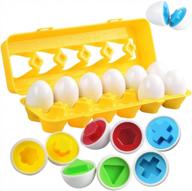

33 Review

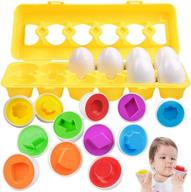

31 Review

What Are Some Other Musical Instruments That Can Be Used With Egg Shakers?
Egg shakers are versatile instruments that can be used in a variety of musical settings. Here are some other musical instruments that can be used with egg shakers:
Overall, egg shakers can be used with a wide variety of musical instruments to create unique and interesting sounds.
What Are Some Popular Songs That Feature Egg Shakers?
Similar products


43 Review

What Are Some Other Percussion Instruments Commonly Used In Latin American Music?
Claves are percussion instruments that are often used in Latin American music1. They are a pair of cylindrical hardwood sticks about 8 inches long and one inch in diameter. Claves are played by striking them together to create a sharp, high-pitched sound. They are often played along with other percussion instruments, such as egg shakers, to create a unique sound1. The clave rhythm is the underlying rhythm pattern used in Afro-Cuban and Latin American music. It is used particularly in mambo, rumba, conga, son, salsa, and other genres. The contemporary concept of clave with its accompanying terminology reached its full development in Cuban popular music during the 1940s. There are two main forms of clave: son or rumba clave, both of which can have a 2-3 or 3-2 structure. Claves can be written in various time signatures, including 2/4, 2/2, 6/8, 12/8, or others.





